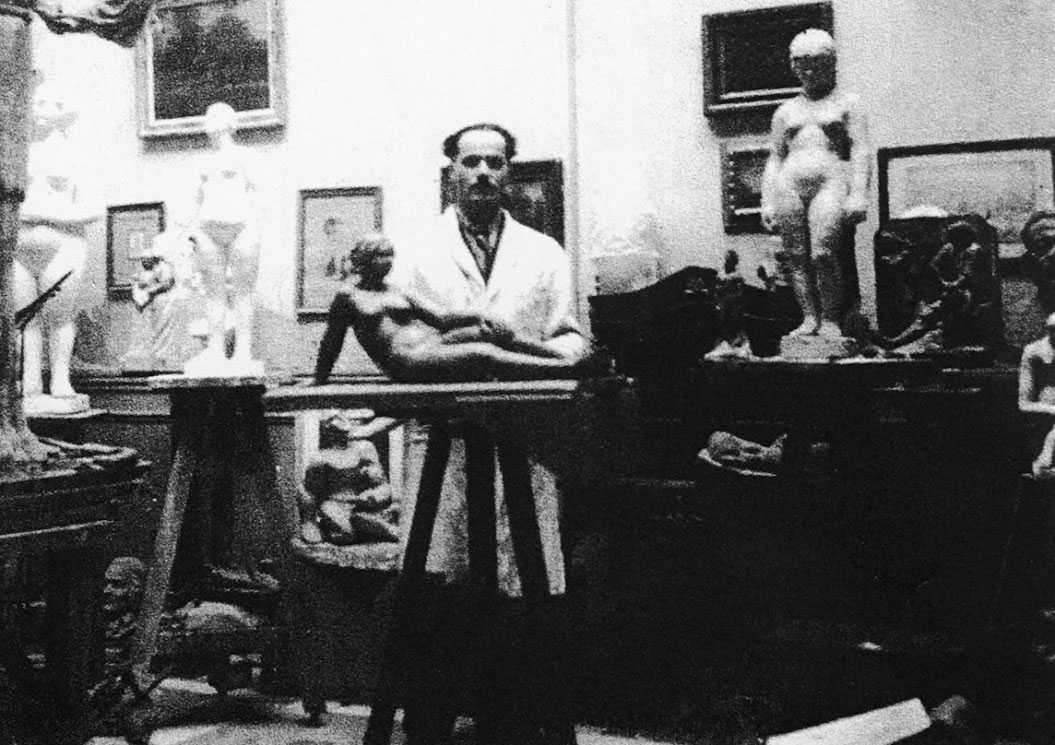Chana ORLOFF
January 5, 2019Anton PRINNER
January 5, 2019Mordechai Perelman
HORODZIEJE (POLAND) 1901 – PARIS 1955
Mordechai Perelman was born in Horodzieje, near Minsk, into a family of rabbis. His father recognized his son’s talent and gave him a secular education, which was rare in orthodox families. Following World War I, Perelman failed the entrance exam of the School of Fine Arts in Warsaw. He enrolled in the Royal Academy of Art in Brussels. In 1927, he was awarded the sculpture first prize as well as a scholarship. That same year, he finished his studies and moved to Paris.
Mordechai Perelman frequented the French artistic scene but stayed true to his traditions. He regularly exhibited his work at the Salon des Artistes Français, Salon d’Automne, and Salon des Indépendants. In the early 1930s, art critics started to take an interest in his work. Indeed, sculpture was not a common form of art among Jews at this time. In 1934, Perelman married Blouma Psihovitz, a Lithuanian law student. Their daughter Hassia was born in 1939.
During World War II, they hid at their neighbors’ house. His entire family in Horodzieje died in the Holocaust. His studio was plundered and his sculptures were destroyed by the Nazis. His prewar works are very rare. Perelman was the president of the Association des Artistes Français from 1946 until his death. He won international recognition thanks to his works on Biblical themes. The French Ministry of Culture acquired one of his sculptures. Today, most of his works are in Paris, Warsaw, and Israel.
Stories of Jewish Artists of the School of Paris 1905-1939
FRENCH-ENGLISH
Capitale des arts, le Paris des années 1905-1939 attire les artistes du monde entier. De cette période de foisonnement, un terme est resté, celui d'Ecole de Paris, qui recouvre une grande diversité d'expression artistique. Dans ce brassage dont Montparnasse est le creuset, un groupe se distingue : celui des artistes juifs venus de Russie, de Pologne et d'Europe centrale. Si leurs styles sont variés, un destin commun les rassemble : ils fuient l'antisémitisme de leur pays d'origine. Certains ont connu la célébrité dès les années 1920, tels Soutine, Lipchitz ou Chagall. D'autres n'ont pas eu le temps ou la chance d'y accéder. Près de la moitié a péri dans les camps de concentration nazis.
From 1905 to 1939, Paris attracted artists from all over the globe as the capital of the art world. This period of artistic proliferation became known as the School of Paris, and includes a great diversity of artistic expression. Within the teeming art world centred on Montparnasse, one group set itself apart: Jewish artists from Russia, Poland, and Central Europe. Although their styles were diverse, they shared the common fate of fleeing anti-Semitic persecutions in their home countries. Some became famous in the 1920s, such as Soutine, Lipchitz, and Chagall, while others did not have the time or the luck to gain renown. Nearly half of these artists died in Nazi concentration camps.





